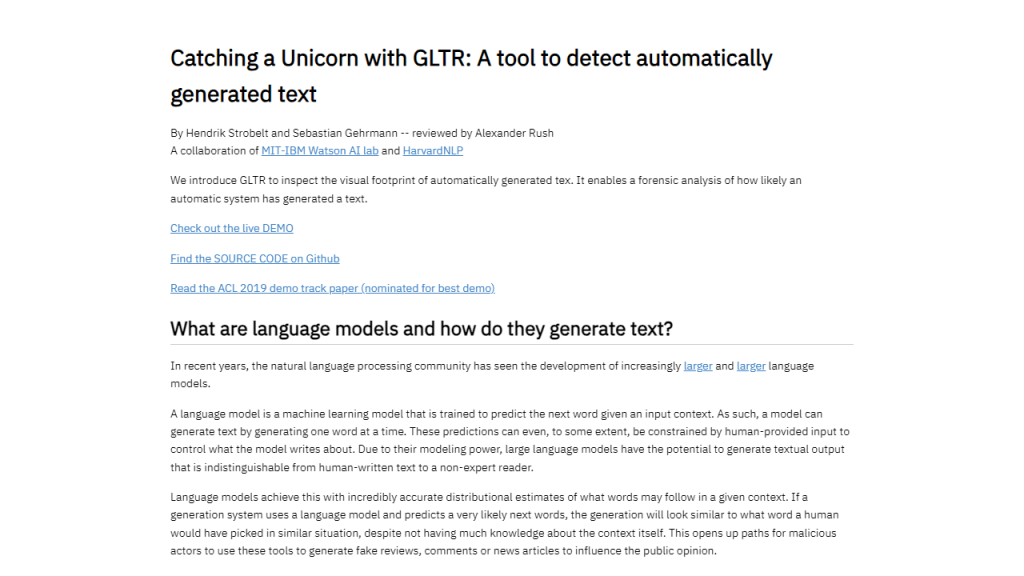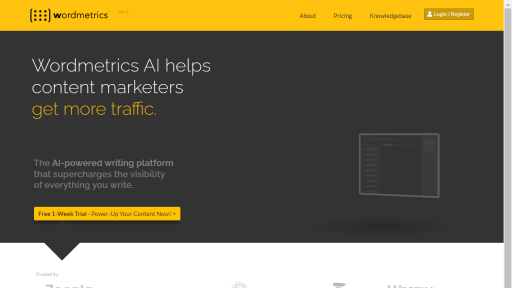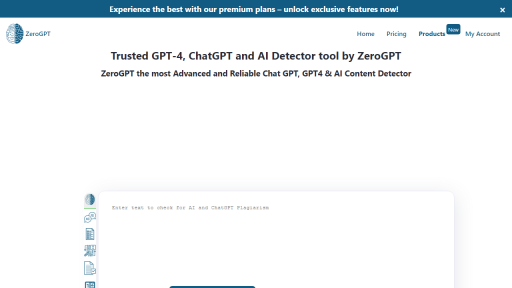What is GLTR?
GLTR, or Giant Language model Test Room, is an innovative tool designed to analyze the output of language models such as GPT-3, GPT-4, and others. Developed by researchers at MIT-IBM Watson AI Lab, GLTR employs statistical methods to assess the authenticity of text generated by AI. By examining the likelihood of word sequences based on a model’s training data, GLTR helps users identify whether a piece of text is likely to have been produced by a human or a machine. This is particularly valuable in contexts where understanding the origin of the text is crucial, such as in journalism, academia, and content creation. The tool visualizes text data through color-coded metrics, indicating the predictability of each word and offering insights into the text’s originality. With GLTR, users can make informed decisions about the credibility of the content they are encountering, thereby fostering a more discerning approach to text consumption in the age of AI.
Features
- Color-Coded Visualization: GLTR provides a graphical representation of text, using color coding to indicate the predictability of words, making it easy to spot machine-generated content.
- Statistical Analysis: The tool employs advanced statistical algorithms to calculate the likelihood of word sequences, enhancing the accuracy of its assessments.
- Interactive User Interface: Users can easily input text and interact with the visualizations, allowing for a hands-on approach to understanding AI-generated content.
- Multi-Model Support: GLTR can analyze text produced by various language models, making it versatile for different applications.
- Real-Time Feedback: The tool offers immediate insights into the text’s characteristics, allowing users to make quick assessments.
Advantages
- Enhanced Credibility Assessment: GLTR empowers users to determine the authenticity of text, which is crucial in avoiding misinformation.
- Educational Value: The tool serves as a learning resource, helping users understand how language models generate text and the nuances involved.
- Supports Ethical AI Use: By identifying machine-generated content, GLTR aids in promoting responsible AI usage and transparency in content creation.
- Time Efficiency: The quick analysis provided by GLTR saves users time in evaluating large volumes of text.
- Collaboration and Research: GLTR can be utilized in academic and research settings, facilitating collaborative efforts to explore AI-generated content.
TL;DR
GLTR is a tool that analyzes and visualizes the predictability of text generated by AI, helping users assess its authenticity and originality.
FAQs
How does GLTR determine if text is AI-generated?
GLTR uses statistical analysis to evaluate the likelihood of word sequences, comparing them against known language model outputs to identify patterns typical of AI-generated text.
Is GLTR free to use?
Yes, GLTR is available for free, allowing users to access its features without any cost, making it widely accessible for various applications.
Can GLTR analyze any text input?
GLTR can analyze text generated by various language models, but the most accurate results are obtained with outputs from popular models like GPT-3 and GPT-4.
What industries can benefit from GLTR?
GLTR is beneficial in journalism, academia, content creation, and any field that relies on the authenticity of written information.
How can educators use GLTR in the classroom?
Educators can use GLTR to teach students about AI, machine learning, and the importance of critical thinking when it comes to evaluating text sources.







